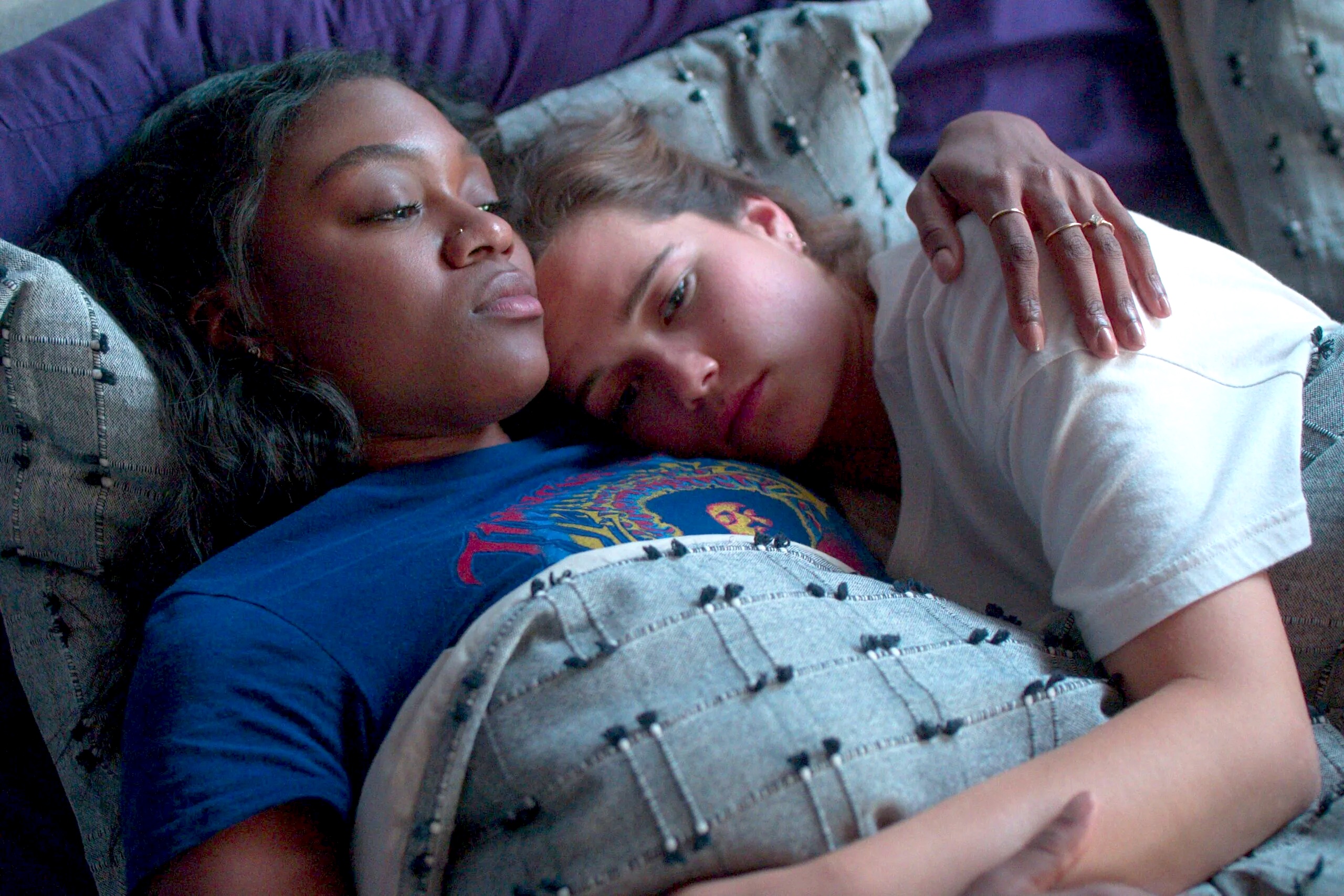Netflix’s ‘First Kill’ Review: The Pulpy Sapphic Vampire Series Gen Z Deserves
It's Buffy meets Riverdale in the worst/best way possible.

Just over a week into pride, and Netflix has dropped their first major new queer series of the month: lesbian vampire teen drama First Kill, starring Sarah Catherine Hook and Imani Lewis. Though the series is hardly high-brow television, erring much closer to the likes of Riverdale than True Blood, there’s something charming about the corniness of First Kill’s pulpy premise. While those looking for “prestige” television will leave disappointed, First Kill is grade-A comfort viewing, and the kind of queer fantasy series gen-z deserves.
Based on the short story of the same name by V.E. Schwab (who also serves here as showrunner), the series follows fledgling vampire Juliette Fairmont (Hook), a socially awkward teen on the verge of coming into her own as a vampire by completing a key milestone: her first kill. Juliette sets her sights on beautiful new girl Calliope (Lewis), completely unaware that Calliope is also on the hunt for her first kill—as a vampire hunter, that is. Both young women are in for a surprise when a chance encounter at a party ends with both inadvertently revealing their supernatural identities, and together, they’re forced to navigate supernatural threats and overbearing familial pressure as their unlikely romance blossoms.
Right out of the gate, First Kill has no qualms about establishing itself as the kind of shamelessly frivolous teen drama that feels like a dying breed in an age of gritty reboots and genre-bending limited series. From the uber-2000s title sequence to the voiceover narration to the on-the-nose song choices, First Kill (whether deliberately or by pure coincidence) somehow manages to invoke a sort of nostalgic, cheesy ’90s energy that makes the questionable dialogue and uneven acting feel endearing rather than flat-out bad—and that’s thanks in large part to the show’s unapologetic commitment to the premise.
First Kill, in many ways, emulates the classic Buffy the Vampire Slayer formula (an unavoidable comparison when your series revolves around a vampire-slaying heroine falling for a vampire with a heart of gold), complete secret double lives, an uber-stylish wardrobe department, an eclectic cast of supporting characters, and questionable CGI monsters to boot. However, as opposed to following a single protagonist, First Kill pulls double duty, jumping between POV sequences for both Calliope and Juliette, which not only gives both girls the chance to develop in equal measure, but also allows the viewer a little breathing room when one half of the narrative begins to overstay its welcome.
Between the two, Calliope’s half of the series is without question more well-acted and written, thanks mostly to the chemistry between the actors playing the rest of her family—Phillip Mullings Jr., Dominic Goodman, and Aubin Wise. There is a genuine familial bond present on Calliope’s side of the story that helps breathe life into the dialogue’s weaker points, and combined with their militaristic vampire-slaying missions and Calliope’s driven, no-nonsense personality, First Kill moves quickly and efficiently whenever we’re following the Burns family.
Where First Kill struggles to land is with Juliette’s half of the story. Where there’s a clearly defined idea of Calliope’s personality and goals, Juliette struggles to come into her own outside of “awkward” and “quiet”—two traits that don’t make for a very compelling protagonist, especially when she’s introduced as the point-of-view character. There’s often a fine line to be walked when it comes to performances of “awkward” personalities—awkward can turn very quickly into uninteresting or stiff onscreen, and Sarah Catherine Hook’s performance unfortunately tends to toe that line more often than not.
The lackluster writing and Juliette’s stifled personality isn’t helped by the fact that the rest of her family talk and interact with one another as if they’re at a board meeting rather than sitting around their own dining room table. Though they are vampires, there’s still a tangible lack of familiarity between the Fairmont family that makes their scenes difficult to watch. Juliette’s older sister Eleanor, in particular, feels like a caricature ripped straight out of The Vampire Diaires. In some ways, her outlandish personality and bizarre speech patterns make a welcome change to the rest of the family’s monotony, but at the same time, it’s difficult to imagine anyone—vampire or not—exclusively referring to their sister as “sweet little.”
As for Juliette and Calliope’s romance, that’s where First Kill truly works best—and also what most fans are likely tuning in for. Their romantic scenes are (from the jump) surprisingly steamy for a teen drama. The two get hot and heavy during a game of spin-the-bottle, complete with slow-motion closeups and plenty of neck-baring to fulfill the vampire imagery quota. On the subject of vampire imagery, credit must be given to First Kill’s cinematography. The show boasts a remarkable visual flare, especially during scenes in which Juliette is struggling to control her bloodlust, and the camerawork/aesthetic choices are one of its most memorable aspects.
Still, even with some interesting visual choices, anyone tuning in to First Kill shouldn’t be expecting the next Emmy-winner. It’s unquestionably the type of pulpy YA fare that’s made to appeal to the Riverdale and Vampire Diaries crowd, and on that count, it succeeds in bringing some much-needed queer representation to a staple television genre. Though both the writing and some of the acting leave something to be desired, there’s enough visual flare and fast-paced action in First Kill to make for a satisfying summer-binge for vampire-loving viewers.
(featured image: Netflix)
Have a tip we should know? tips@themarysue.com